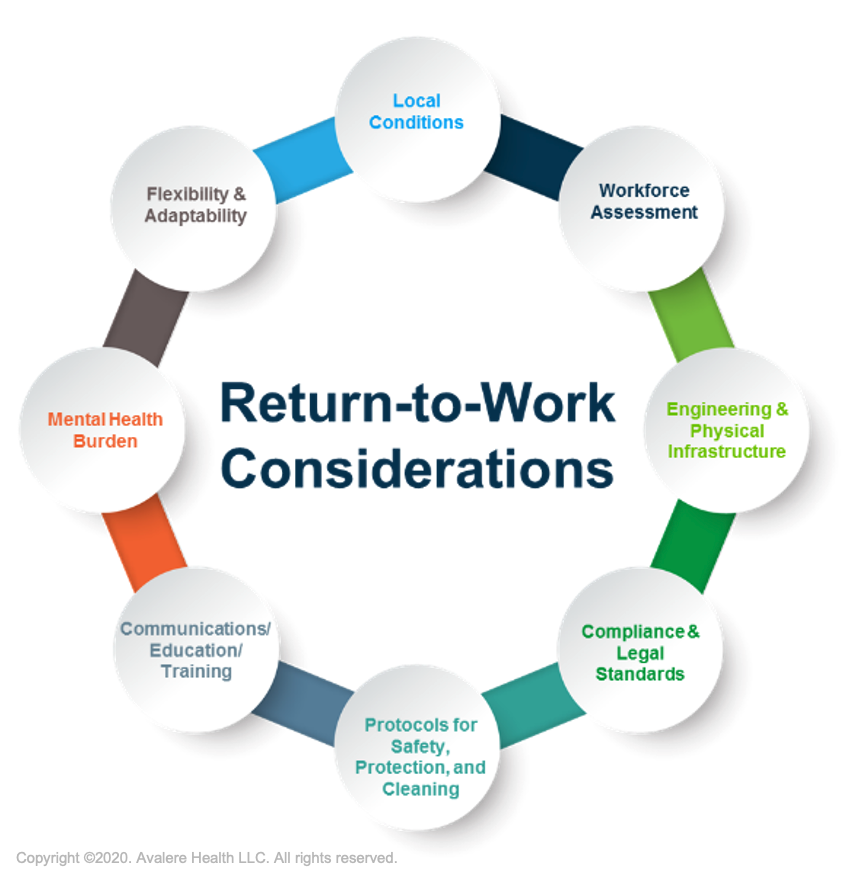Getting back to the office environment

As a follow up to my first blog about the impact of working from home since the start of the pandemic, I thought I would share insight to the considerations on how we all start the transition back to the office, the management of work & life, the office space now needed and localised economic impacts.
1) The general trend seems to be that the majority of companies will remain productive with their staff back in the offices 2 to 3 days per week (there are exceptions to this) and that surveys conducted by staff members call for this ratio. It seems, probably not unexpectedly, that staff want to be back in the office but not every day. Culturally, remote working needs be seen as a choice but also well structured, and the C-suite needs to reassure their teams that they will not be frowned upon for not coming in 5 days per week. HSBC boss Noel Quinn said the whole bank was embracing "hybrid working" and he would no longer come in five days a week and that top managers in its Canary Wharf HQ have lost their offices and will have to hot-desk on an open-plan floor.
2) I read an interesting article about the fact that whilst it has been great that the commute time has been lost, many have taken this as an opportunity to start their day earlier or finish later. This is by choice for most rather than expected, however, getting back in to the 90 minute commute each way for 2-3 days per week means a loss of 6-9 hours working time compared to current. Will staff be queried about productivity changes as their work rate has been at a given level for 12 months? More time in the office when there, or even longer days when at home? This is where striking the balance and managing your time according to your personal situation is critical. From a management point of view this comes down to trust again. A person with 4 children of school age will have a completely different home working environment in comparison to those who have yet to have children or who are older/moved out. Each of these people will require different flex in their working day. There are reports of staff feeling pressured to answer emails and calls “out of hours” from bosses who themselves are working longer days. Structure is key.
3) From discussions with clients, particularly in the FS sector, offices were already over capacity so hot desking was the norm. Office space is being repurposed to facilitate the 2 days per week in the office ratios. Real estate is going to be a huge consideration in the coming 5-10 years. I don’t believe we will see an exodus from the cities just yet but when the leases are up for renewal there will be challenges. Banking and Insurance own vast swathes of buildings. Call centres have also slowly been increasing their remote working capabilities, a real shift away from their office based traditions. There are huge real estate footprints for these businesses. For me this will be one of the larger impacts in the coming years. What happens to all this space? Particularly in the high rise tower blocks it would seem repurposing to flats and apartments would go some way to increasing much needed housing stock.
4) Whilst working from home and less requirement to be in the office is great the impact on local economies is not so good. Hopefully furlough and bounce back loans have kept most viable but as they reopen private coffee shops, small retail outlets, independent bars and alike will suffer from the reduction of the footfall and ever needed passing trade. At best I would hope the need will always be there but at reduced volume meaning a squeeze on profits and staffing. Indeed there are may reports of limited opening hours due to lack of staff as many on furlough are not needing to look for new work and students who typically make up a large proportion of hospitality are not in halls as usual. This may mean price increases for us as consumers to cover the costs of retaining the staff numbers needed to provide good service levels but for perhaps 50% of its intended capacity. On the other hand, the local towns and villages are seeing a boom. I still like to get a coffee from somewhere! Train fares are already changing to meet the new travel patterns. Former cost modelling for many businesses is out of the window and new ones being formulated all the time. The consumer always dictates the business direction however in a Monday to Friday working week the consumer now requires services locally to home or online and less than before at their particular office location. The latter will need to find new ways of attracting footfall for when the consumer is in the office.
It is hard to tell what the new landscape will look like but we can't imagine stalling an ecnonomy is not going to have huge long term damage and certain industries have now changed forever.
Your thoughts and comments are welcome.....